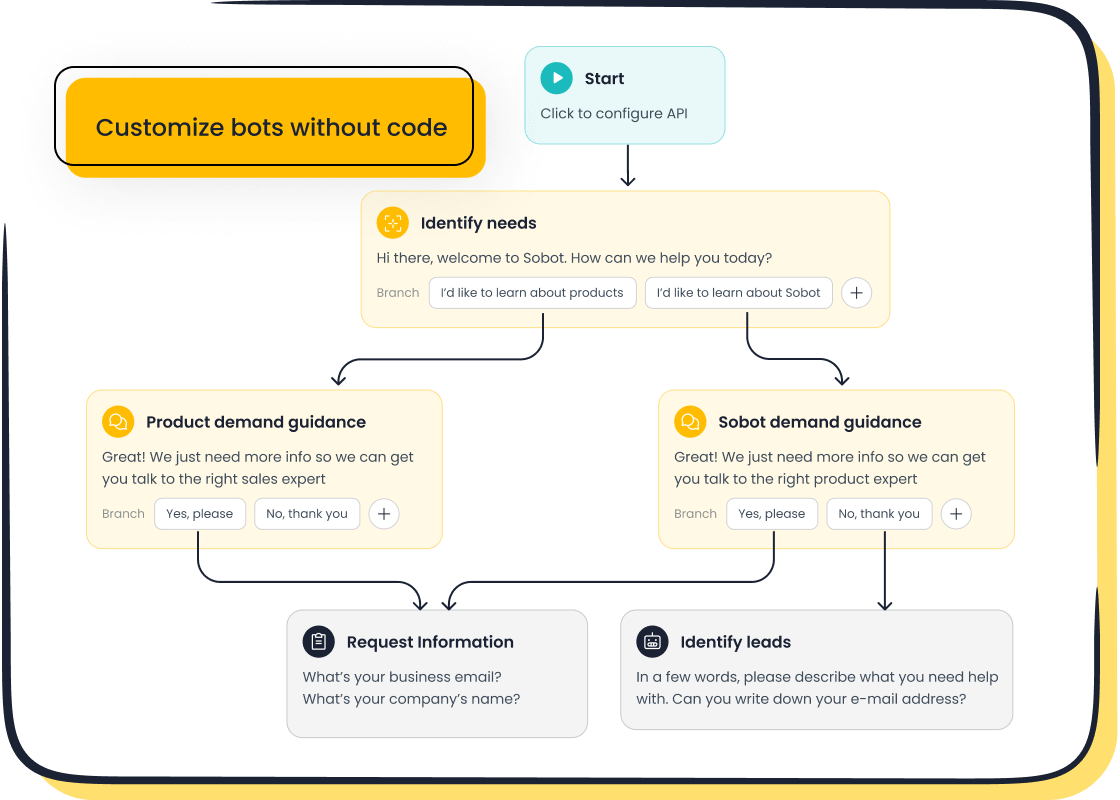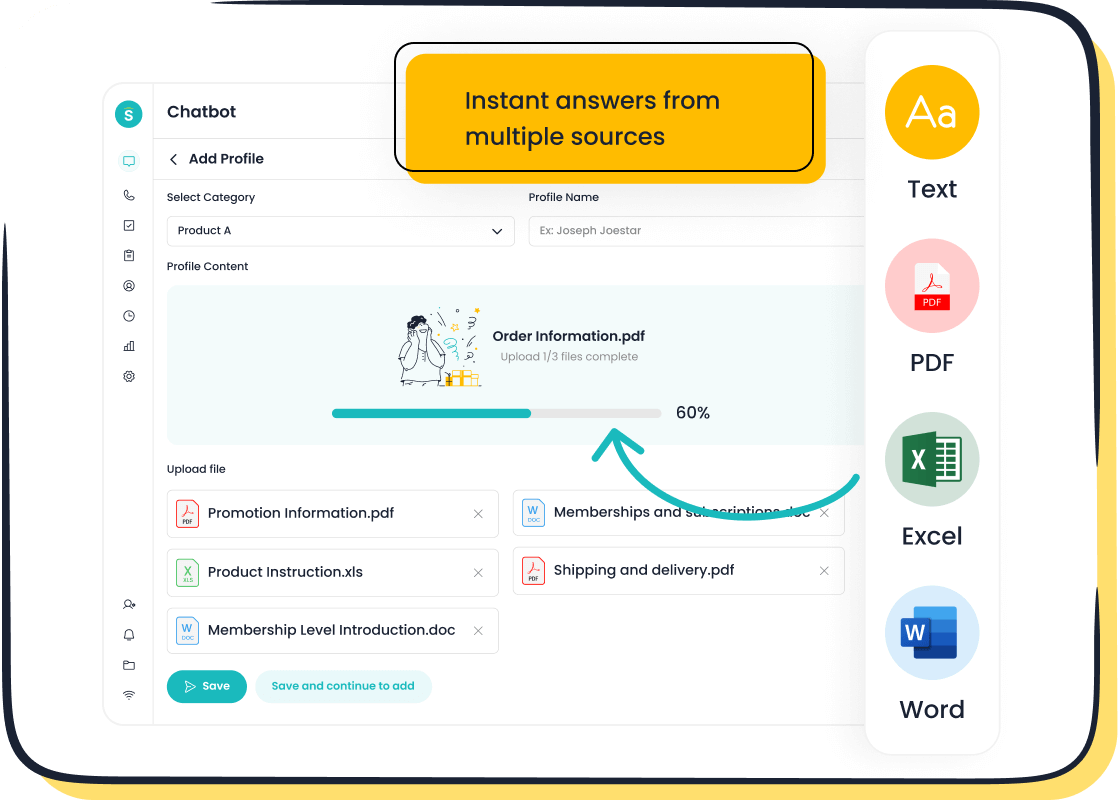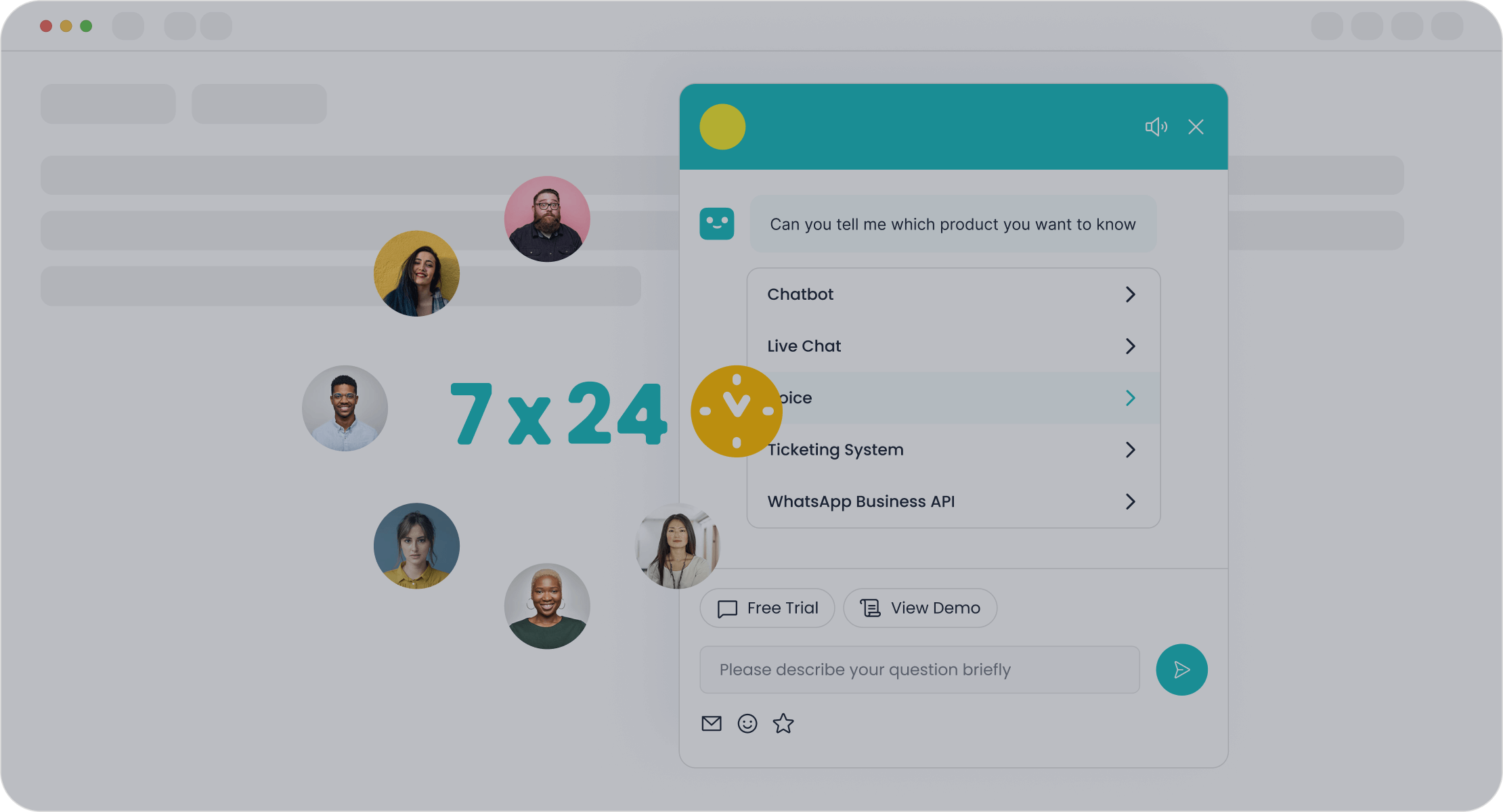AI or Rule-Based Personalization What Works Best for You

Choosing the right approach—AI or rule-based systems—shapes the customer experience in ecommerce. Businesses often seek to improve engagement, drive conversions, and deliver a personalized experience example that truly resonates with customers. Sobot AI chatbots provide dynamic, real-time personalization and can scale to millions of customers, surpassing the capabilities of traditional rule-based systems that handle simple tasks consistently. Integrating solutions like the Sobot call center further enhances customer interactions by unifying communication channels. The best approach depends on business goals, resources, and the desired level of control or adaptability. Today’s user experience relies heavily on effectiveness, cost, complexity, scalability, and data, all of which Sobot is designed to optimize.
Quick Comparison
Key Differences
A comparative analysis between AI-driven and rule-based personalization helps ecommerce businesses choose the right approach for a customer-centric shopping experience. The table below highlights the main distinctions:
| Aspect | Rule-Based Personalization | AI-Driven Personalization |
|---|---|---|
| Effectiveness | Predictable logic, best for simple, stable scenarios. Strong control, but limited adaptability. Example: John Lewis uses rule-based recommendations for brand alignment. | High accuracy, dynamic adaptation, and real-time responses. AI uncovers subtle patterns for superior engagement. Netflix and Sephora use AI for personalized experiences. |
| Cost | Lower initial cost, quick deployment, minimal data science. Example: Marks & Spencer seasonal campaigns use rule-based logic. | Higher upfront investment, longer setup, ongoing model maintenance. Amazon’s AI recommendations require significant resources but scale efficiently. |
| Scalability | Limited scalability, manual rule updates become unmanageable with growth. Best for small or stable audiences. | Highly scalable, manages thousands of micro-segments, adapts to changing behavior. Spotify’s Discover Weekly adapts weekly to user trends. |
Rule-based personalization relies on explicit data and manual rule creation. It works well for straightforward ecommerce scenarios but struggles as customer needs grow more complex. AI-driven personalization uses machine learning to analyze both explicit and implicit data, adapting automatically to new patterns and delivering more relevant personalized experiences.
Personalized Experience Example
A real-world personalized experience example demonstrates the impact of each approach. Rule-based chatbots follow scripts, offering consistent but limited interactions. In contrast, Sobot’s AI-powered chatbot uses natural language processing and predictive analytics to deliver dynamic, context-aware responses. For instance, Agilent, a leader in life sciences, implemented Sobot’s AI chatbot to handle a high volume of customer inquiries. This approach increased service efficiency by six times and improved customer satisfaction to 95%. The AI system provided 24/7 support, allowing human agents to focus on complex issues and ensuring every customer received a tailored, personalized experience example.
In ecommerce, Sobot’s AI chatbot enables businesses to recommend products based on real-time behavior, not just static rules. This comparative analysis shows that AI-driven personalization transforms the customer journey, making it more engaging and effective than traditional methods. Businesses seeking scalable, adaptive, and truly personalized experiences in ecommerce benefit most from an AI approach.
Rule-Based Personalization

How It Works
Rule-based personalization uses a set of predefined instructions to segment and target customers. Businesses create if/then rules based on explicit data such as purchase history, location, device type, or session behavior. For example, an ecommerce retailer might greet new visitors with a discount pop-up, while returning customers see loyalty offers. These rules allow companies to deliver tailored content, product recommendations, and marketing messages that match each segment’s interests and needs.
In customer service, rule-based systems automate responses to common inquiries. A chatbot might answer questions about shipping policies or direct users to the right department based on keywords. Sobot’s workflow automation features enable businesses to build these rule-based AI flows without coding. The platform supports multi-channel engagement, including chat, email, voice, and social media, ensuring consistent customer personalization across every touchpoint. Sobot’s visual bot builder lets teams design workflows that trigger specific actions, such as sending follow-up emails or escalating tickets, based on customer input.
Rule-based AI operates by applying logical conditions to known or assumed customer data. Explicit personalization uses facts like location or device, while implicit personalization relies on session behavior or browsing patterns. This approach helps ecommerce brands deliver relevant experiences, improve engagement, and boost conversion rates.
Strengths
Rule-based systems offer several advantages for ecommerce personalization. They provide strong control over customer interactions, ensuring predictable and consistent outcomes. Businesses can quickly deploy rule-based AI solutions with minimal technical expertise. Sobot’s customizable workflows allow teams to automate repetitive tasks, organize support content, and manage knowledge bases efficiently.
Key advantages of rule-based AI include:
- Multi-channel support for chat, email, voice, and social media
- Intelligent routing that directs inquiries to the right agents
- Real-time analytics and reporting tools for operational insights
- Sentiment analysis to gauge customer emotions
- Visual bot builder for easy workflow creation
- Multi-language support for global reach
Industries such as digital marketing, ecommerce, SaaS, and AdTech benefit most from rule-based systems. Companies like Citrix and Optimizely personalize homepages based on visitor industry, while Aliexpress uses geolocation for currency conversion. Google applies rule-based AI to personalize search results using cookies. These systems excel where distinct user segments require tailored content, such as gender-specific promotions or device-specific website versions.
Sobot’s rule-based AI features help ecommerce brands streamline customer service, automate ticket creation, and deliver dynamic content. The platform’s robust APIs integrate with other business systems, supporting scalable infrastructure for growing interaction volumes. Businesses can trace and debug workflows to improve accuracy and resolution rates.
Limitations
Despite their advantages, rule-based systems face several limitations compared to AI-driven personalization. Rule-based AI depends on static rules and segmentation, which restricts flexibility and scalability. Managing many concurrent rules can lead to complexity, bugs, and discrepancies. Scaling rule-based systems requires manual adjustments and extensive planning.
Rule-based AI lacks real-time adaptation, predictive analytics, and continuous learning. It cannot analyze user behavior dynamically or adapt to new patterns as quickly as machine learning models. For example, rule-based ecommerce personalization might target customers based on demographics or simple retargeting, such as cart abandonment emails. In contrast, AI-driven personalization uses algorithms to recommend products, predict needs, and deliver individualized experiences.
AI-driven systems increase customer engagement and lifetime value by learning from data and adapting in real time. Rule-based AI cannot handle large content volumes or predict customer needs with the same accuracy. Businesses seeking advanced personalization, scalability, and nuanced customer experiences often choose AI-driven solutions.
Tip: Rule-based systems work best for straightforward scenarios with clear segmentation. For complex, evolving customer journeys, AI-driven personalization offers greater adaptability and impact.
AI-Driven Personalization

What Is AI
AI-driven personalization uses artificial intelligence and machine learning AI to analyze large volumes of customer data. This approach uncovers hidden patterns, understands intent, and predicts future needs. Unlike rule-based methods, which rely on static, manually created rules, AI adapts in real time. It processes complex, multi-dimensional data, including behavior, sentiment, and context, to deliver personalized recommendations and adaptive responses.
| Aspect | AI-Driven Personalization | Rule-Based Personalization |
|---|---|---|
| Definition | Uses AI and machine learning to analyze large customer data, uncover hidden patterns, understand intent, and predict future needs. | Relies on static, manually created "if-this-then-that" rules based on simple actions or demographics. |
| Adaptability | Continuously adapts and improves in real-time through learning algorithms. | Static and manual; requires human intervention to update rules. |
| Data Processing Capability | Processes complex, multi-dimensional data including behavior, sentiment, context, and social media activity simultaneously. | Limited to simple, predefined conditions; cannot handle large or complex data sets effectively. |
| Scalability | Highly scalable; can handle growing customer bases and complex behaviors without manual rule management. | Poor scalability; managing many rules becomes overwhelming and error-prone as customer base grows. |
| Proactivity | Proactively predicts customer needs and preferences before they are explicitly expressed. | Reactive; personalization only responds after manual rule adjustments, often lagging behind customer needs. |
| Labor Intensity | Low manual effort after setup due to automation and continuous learning. | High manual effort; requires constant rule creation and maintenance. |
| Example | Netflix’s recommendation system that learns and improves with user interactions. | Simple rule like "If bought shoes, show socks ads" that does not evolve over time. |
AI-driven personalization stands out for its contextual understanding and ability to transform customer experience. It enables businesses to deliver dynamic, relevant content and recommendations, adapting to each customer’s journey in real time. This approach supports complex problem-solving and provides a foundation for future innovation.
AI-Powered Chatbots
AI-powered chatbots represent a major advancement in customer service and engagement. These chatbots use machine learning AI to interpret customer queries, analyze intent, and generate adaptive responses. Unlike traditional bots, AI chatbots can handle complex problem-solving, understand context, and provide personalized recommendations based on real-time data.
Key advantages of AI-powered chatbots include:
- Immediate, 24/7 support that reduces response and resolution times.
- Contextual understanding of customer needs, enabling tailored interactions.
- Adaptive responses that evolve with each conversation.
- Ability to process and analyze large datasets for more accurate recommendations.
- Seamless integration with multiple channels, including chat, email, voice, and social media.
Businesses using AI-powered chatbots report significant improvements in efficiency and customer satisfaction. For example, Domino’s Pizza saw a 25% increase in sales after implementing an AI chatbot for immediate support. Walmart experienced a 30% rise in customer satisfaction. According to Gartner, companies using AI chatbots can achieve up to a 40% increase in conversion rates due to timely support (Gartner). These results highlight the advantages of AI chatbots in delivering an enhanced user experience and driving business growth.

Sobot Chatbot Benefits
Sobot’s AI-powered chatbots deliver measurable benefits across industries. The platform leverages machine learning AI and advanced contextual understanding to automate routine tasks, provide adaptive responses, and support complex problem-solving. Sobot’s chatbots operate 24/7, ensuring customers receive immediate assistance at any time.
| Business / Company | Measurable Benefits Achieved |
|---|---|
| OPPO | 83% chatbot resolution rate; 57% increase in repurchase rates |
| Samsung | 97% customer satisfaction rate using multilingual support |
| Agilent Technologies | 6x increase in service efficiency; 25% cost reduction; 95% customer satisfaction |
| Opay | Customer satisfaction improved from 60% to 90%; 20% cost reduction |
| General Sobot Users | 15-35% boost in automated resolution rates; up to 70% productivity improvement; up to 50% reduction in service costs |
Sobot’s AI-powered chatbots excel in several areas:
- They reduce first response times by 37% and speed up ticket resolution by 52%.
- Hybrid models allow AI to handle up to 80% of routine inquiries, freeing human agents for complex problem-solving.
- Businesses see a 30% reduction in response times and a 25% increase in customer satisfaction.
- Operational costs decrease by up to 20% through automation.
- Customer retention improves by 20% when AI chatbots are integrated effectively.
Sobot’s chatbots also provide valuable insights into customer behavior, increasing upsell and cross-sell opportunities by 15% and boosting loyalty by 10%. The platform’s multilingual capabilities and omnichannel support ensure a consistent, personalized customer interaction across every touchpoint. These advantages of AI chatbots help businesses achieve higher productivity, lower costs, and improved customer satisfaction.
Use Cases
AI-driven personalization and AI-powered chatbots have transformed business operations in many sectors. Companies like Netflix, Amazon, and Spotify use AI-powered recommendation engines to deliver personalized recommendations and content. Starbucks offers real-time promotions and menu suggestions through its mobile app, powered by AI and location data. Sephora provides virtual beauty assistant recommendations based on skin tone and purchase history.
Sobot’s AI-powered chatbots enable businesses to:
- Identify distinct customer segments for targeted strategies.
- Optimize resources by recognizing customers likely to purchase without incentives.
- Improve cart recovery with real-time, targeted messages.
- Prioritize retargeting spend on high-value customers.
- Reduce intervention time from hours to seconds through real-time data streaming.
- Establish a platform for future innovation in real-time personalization.
A standout example comes from Agilent Technologies. Agilent faced challenges managing a high volume of customer inquiries while maintaining accuracy and efficiency. By implementing Sobot’s AI-powered chatbot and omnichannel workbench, Agilent achieved a sixfold increase in service efficiency, a 25% reduction in costs, and a 95% customer satisfaction score. The chatbot provided 24/7 support, allowing human agents to focus on complex problem-solving. This resulted in a truly personalized customer interaction and an enhanced user experience.
AI-powered chatbots not only automate routine tasks but also deliver contextual understanding and adaptive responses. They support complex problem-solving and drive business outcomes by providing timely, relevant recommendations.
Businesses adopting AI-powered chatbots and machine learning AI for personalization gain a competitive advantage. They deliver dynamic customer experiences, increase engagement, and boost conversion rates. Automation reduces acquisition costs by up to 50%, freeing resources for innovation. Data-driven decision-making enables precise targeting and better customer segmentation.
AI-powered recommendation systems continue to evolve, offering new ways to transform customer experience. Companies that embrace these technologies position themselves for long-term success in a rapidly changing digital landscape.
Side-by-Side Comparison
Cost
Rule-based systems offer a cost-effective solution for ecommerce businesses with straightforward needs. These systems require lower initial investments and can be deployed quickly. Maintenance costs remain low, but as business requirements change, expenses may rise due to manual updates. AI-driven personalization, including ai-powered chatbots, demands a higher upfront investment for technology, training, and skilled personnel. However, companies often see substantial long-term returns. For example, businesses using ai chatbots report a 30% reduction in support costs. Sobot’s ai-powered chatbots automate routine tasks, saving up to 50% on agent expenses and delivering an average ROI of 1,275%.
| Aspect | AI-Driven Personalization | Rule-Based Systems |
|---|---|---|
| Initial Investment | High | Low |
| Ongoing Maintenance Costs | Higher | Lower |
| Long-Term Cost Efficiency | Better with scale | May increase over time |
Complexity
Deploying rule-based ai involves managing many audience segments and manual rule creation. This process becomes time-consuming as ecommerce businesses grow. AI-driven personalization introduces complexity through integration, data management, and system interoperability. Low-code platforms, such as Sobot’s visual bot builder, simplify ai chatbot deployment with drag-and-drop workflows and pre-built connectors. Real-time event processing and cloud-native microservices further reduce technical barriers.
- Rule-based systems require manual updates and human oversight.
- AI-powered chatbots automate data collection and decision-making, enabling scalable and personalized recommendations.
Scalability
AI-driven personalization scales efficiently by leveraging adaptive learning and real-time data analysis. Sobot’s ai chatbots aggregate diverse data sources, including behavioral patterns and contextual information, to deliver dynamic recommendations. Rule-based systems struggle with scalability, as manual rule creation becomes unmanageable with increased customer segments. AI chatbots handle complex datasets and evolving user experience needs without manual intervention, optimizing marketing spend and increasing conversion rates.
Customer Experience
AI-powered chatbots transform customer experience by providing real-time adaptability and hyper-personalization. Businesses using ai-driven personalization see engagement rates double and conversion rates rise by 1.7 times. Sobot’s ai chatbots deliver immediate support, personalized recommendations, and emotional intelligence-based interactions. Rule-based systems offer consistent but limited personalization, lacking the ability to adapt interfaces or respond to changing customer needs.
AI-driven personalization delivers deeper engagement, higher satisfaction scores, and improved loyalty program participation.
Data Needs
Rule-based ai relies on explicit data and simple conditions, making it suitable for basic ecommerce scenarios. AI-driven personalization requires large volumes of data, including behavioral, contextual, and historical information. Sobot’s ai-powered chatbots process complex datasets to provide accurate recommendations and optimize user experience. As businesses grow, ai chatbots efficiently handle evolving data needs, while rule-based systems face challenges in managing increased data complexity.
Decision Guide
Checklist
Businesses can use the following checklist to select the right personalization approach:
-
Review rule-based systems:
- Manual "if/then" rules segment customers.
- Easy to track, but scaling becomes difficult.
- Personalization stays broad, not individual.
-
Examine ai-powered chatbots and machine learning:
- Automate rule creation and customer segmentation.
- Provide scalable, deep personalization.
- Use algorithms like collaborative filtering and decision trees for advanced recommendation.
-
Consider resources and strategy:
- Machine learning needs strategic planning, but less manual upkeep.
- Rule-based systems suit audiences preferring predictable experiences.
-
Assess business needs:
- Machine learning delivers higher ROI for highly personalized marketing.
- Rule-based systems work for simple, less data-driven strategies.
-
Explore hybrid solutions:
- Modern platforms, such as Sobot, combine rule-based systems and ai chatbots.
- Choose tools that match marketing goals and available resources.
Tip: Businesses should measure ROI by tracking revenue from personalization, not just engagement metrics.
Common Scenarios
Rule-based systems fit businesses with limited inventories or those starting out. These systems offer simplicity and predictable outcomes. They work well for clear audience segments and straightforward recommendation needs. For example, a retailer with a small product catalog can use rule-based systems to recommend related items based on purchase history.
Ai-powered chatbots excel in complex environments with large, diverse customer bases. These chatbots analyze vast data sets and adapt recommendations in real time. Companies needing scalable, dynamic personalization benefit from ai chatbots. For instance, Sobot’s ai-powered chatbots help brands like OPPO achieve high resolution rates and boost repurchase rates by tailoring recommendations to individual behaviors.
Hybrid Approaches
A hybrid approach combines rule-based systems with ai-powered chatbots. This method suits organizations needing both adaptability and predictability. Industries such as retail, healthcare, and finance use hybrid systems to balance structured requirements with dynamic recommendation capabilities. Sobot enables this integration by offering SDK tools for rule-based flows and advanced ai chatbots powered by large language models. Businesses can trigger messages based on user behavior or predefined rules, ensuring proactive engagement. Sobot’s flexible APIs allow seamless blending of ai chatbots and rule-based systems, supporting personalized experiences across channels. Companies like OPPO have seen significant improvements in chatbot resolution and repurchase rates by using this hybrid approach.
Note: Hybrid systems offer the best of both worlds, combining the reliability of rule-based systems with the adaptability of ai-powered chatbots for superior recommendation outcomes.
Businesses face important choices when selecting between rule-based systems and ai chatbots. They must understand customer expectations, choose the right approach for campaign-based or customer-centric goals, and use detailed segmentation for better results. Rule-based systems offer control and predictability, while ai chatbots provide real-time, adaptive personalization. Companies like Agilent have seen a 6x increase in efficiency with ai chatbots. Sobot delivers both rule-based systems and ai chatbots, helping brands improve customer satisfaction and ROI. Rule-based systems and ai chatbots both play vital roles in enhancing customer experience.
FAQ
What is the main difference between AI and rule-based personalization?
AI uses machine learning to adapt and learn from customer data. Rule-based personalization follows fixed instructions set by humans. AI can improve customer experience by predicting needs, while rule-based systems work best for simple, repetitive tasks.
How does Sobot’s AI chatbot improve customer experience?
Sobot’s AI chatbot provides 24/7 support, answers questions instantly, and learns from each interaction. This approach increases efficiency by up to 70% and reduces service costs by 50%. Customers receive faster, more accurate responses, which boosts satisfaction and loyalty.
When should a business choose rule-based personalization?
Businesses should use rule-based personalization for straightforward scenarios. For example, a store can show a welcome message to new visitors. Rule-based systems offer strong control and work well when customer needs are simple and predictable.
Can AI-driven personalization and rule-based systems work together?
Yes, many companies combine AI and rule-based personalization. Sobot allows businesses to use both approaches. For example, a rule-based system can handle basic tasks, while AI chatbots manage complex questions. This hybrid model improves overall customer experience.
What data does AI-driven personalization require?
AI-driven personalization needs large amounts of data, such as browsing history, purchase records, and customer feedback. Sobot’s AI chatbot processes this information to deliver accurate recommendations and personalized experiences. Rule-based systems need less data but cannot adapt as quickly.
See Also
How To Select The Top Chatbot Software Solutions
Understanding AI Software For Modern Call Centers
Expert Tips For Live Chat Success In Retail
